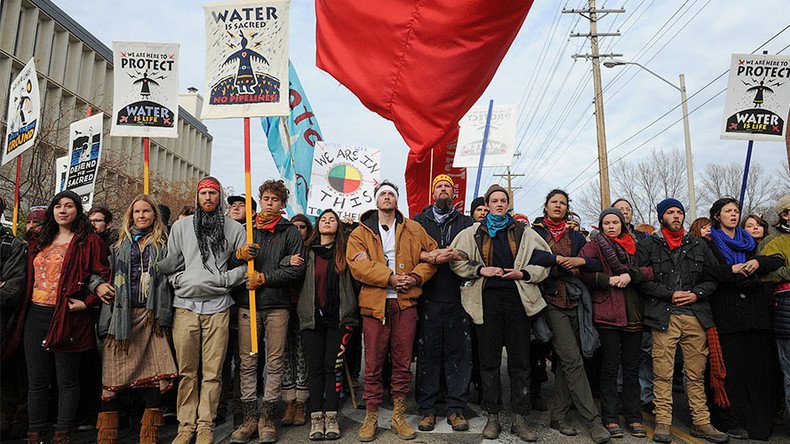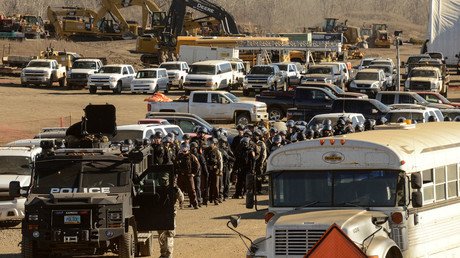Demonstrators across the US are planning to hold more than 200 rallies against the Dakota Access Pipeline on Tuesday. The ‘Day of Action’ is expected to be the largest protest against the pipeline since the government halted the project in September.
The ‘Day of Action’ was called for by indigenous leaders in support of the Standing Rock Sioux tribe. Its goal is to stop the US government and the Army Corps of Engineers from building the pipeline, Indigenous Environmental Network (IEN) spokesperson Dallas Goldtooth said, as cited by Reuters. IEN is one of the organizers of the Tuesday protests.
“The purpose is to elevate the issue and to encourage the Army Corps to exert its power to stop this pipeline,” Goldtooth said.
More than 30 groups, including Greenpeace and CREDO Action, will participate in Tuesday’s protests outside the Army Corps offices and at major banks financing the pipeline.
The ‘Day of Action’ comes just one day after the Army Corps of Engineers and Department of Interior delayed a decision on whether to allow a tunnel to be built under the Missouri River reservoir, Lake Oahe –the source of water that is the focus of the protests. The Army Corps of Engineers said it wants input from the Standing Rock Sioux tribe, whose reservation is extremely close to the planned pipeline, before making a decision.
The construction of the $3.7 billion pipeline has been drawing protests since spring 2016, the Sioux tribe and environmental activists claiming it could pollute nearby water sources and destroy the tribe’s sacred sites.
The pipeline is currently about 85 percent complete, Philipps 66, one of the pipeline’s investors, said last week. The only remaining work to be done in North Dakota is the section that would run under Lake Oahe, according to Energy Transfer Partners (ETP), the main company behind the pipeline. ETP maintains the pipeline would be a more efficient and safer way to transport oil from the Bakken shale of North Dakota to the Midwest and the US Gulf Coast.
Demonstrators disagree, however, and continue to come out in full force against the pipeline, sometimes clashing with authorities. Earlier this month, police reportedly used rubber bullets during a protest, with one person taken to a nearby clinic. In September, a video from a protest appeared to show security officers unleashing dogs on demonstrators.
Leaders of the Standing Rock Sioux tribe have vowed to continue protesting the 1,172 mile (1,885 kilometer) pipeline through the winter if necessary, vowing to provide shelter, food, and heating to demonstrators.


